* The silent and meditative world of climbers *
The Sahyadri landscape is characterized by a distinctive feature: pinnacles! Many of these stand typically isolated next to flat topped bulks that signify the flat basaltic flows that formed the Deccan traps of central-south India. And then there are clusters of pinnacles riding atop ridges that snake down from the edge of the west facing escarpment of the Sahyadri to coastal plains of Kokan. These ridge-top clusters always remind me of the ‘gendarmes’ encountered by mountaineers in the Alps or the Himalaya! The Sahyadri pinnacles have been irresistible challenges to rock climbers ever since the mid nineteen fifties when enthusiasts started adventure as a leisure activity.
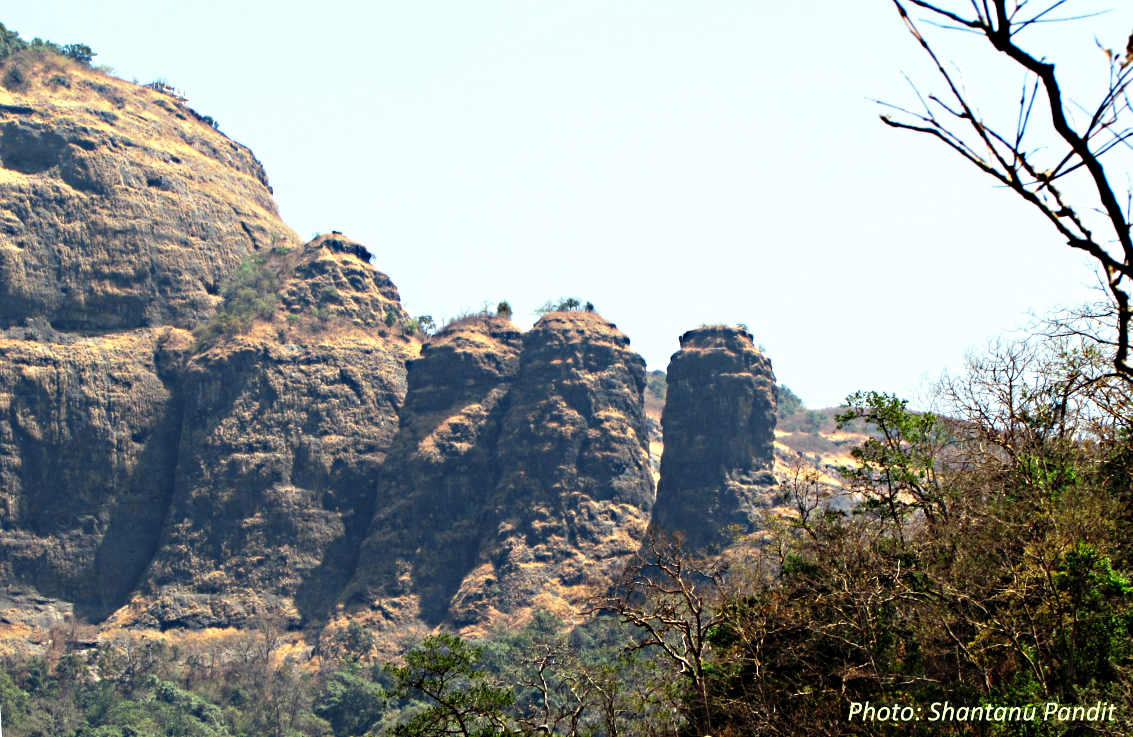
Pinnacle cluster just south of Mrugagad in Sudhagad Taluka, District Raigad in the state of Maharashtra. In all probability these are unclimbed and unnamed, though there certainly would be local names ascribed to them.
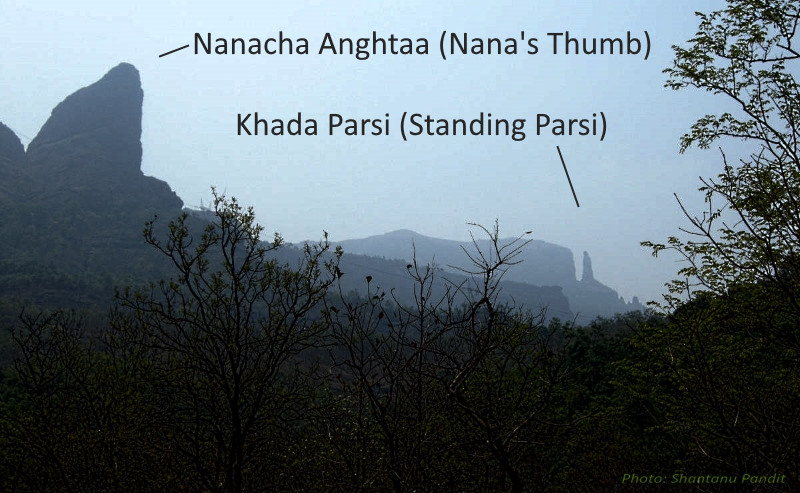
Prominent on the skyline of the drive up to Maleshj Ghat, the motorable pass due east of Mumbai, is the squat bulk of Nanacha Angthaa (Nana’s Thumb!) that juts out on the crest of the Sahyadri. The famous Khada Parsi* pinnacle to the right stands next to the fort of Jivdhan. And Jivdhan is the guardian fort of the two thousand year old trade route (non-motorable even today!) of Naneghat linking the ports of Kalyan and Sopara on the western coast of India to the bazaars of Junnar and Paithan on the Deccan Plateau.
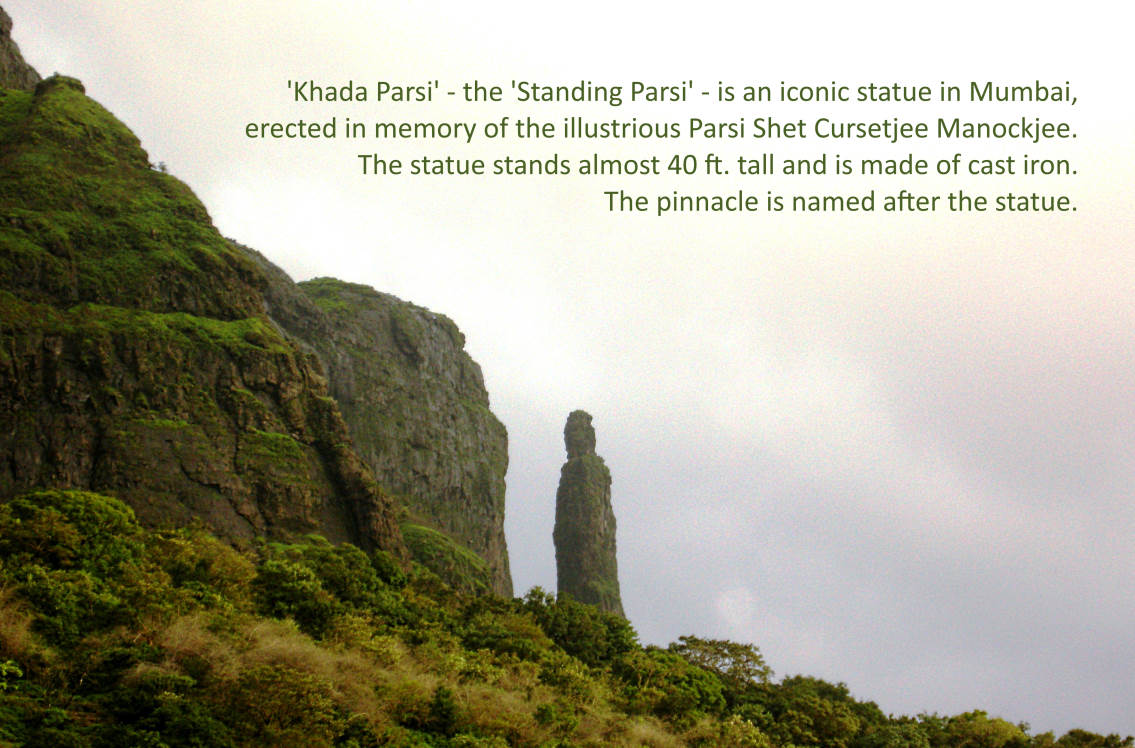
While I have climbed Khada Parsi pinnacle a few times, the last time must have been in early 2000s. The rock route most often climbed then involved free climbing for the first half, after which we used to encounter a plethora of old rusty expansion bolts hammered by successive generations of climbers for trad-climbing. Today, this route has been bolted in a studied way using chemical bolting technology.
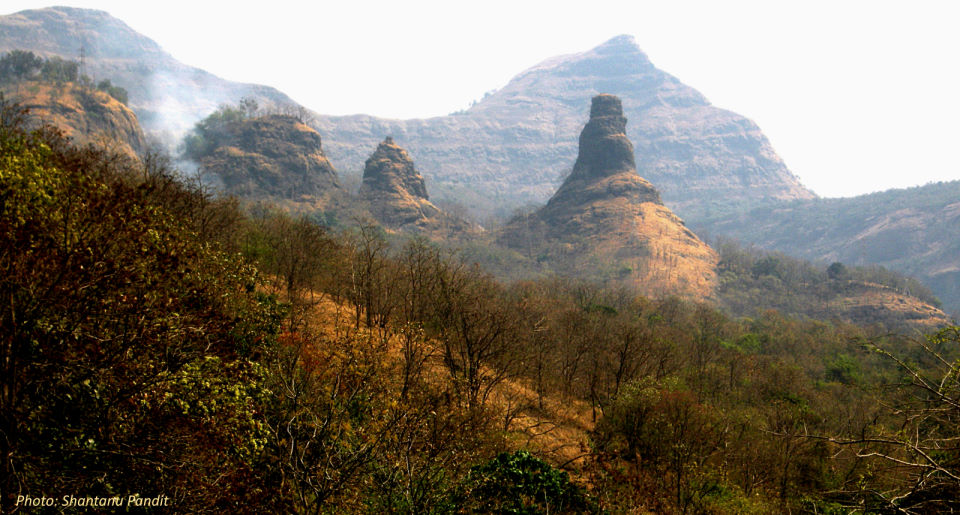
Alongside this ridge featured in the above photograph is a unique feature – a funicular railway built by the Tata Power Company alongside pipelines that brings the waters from a reservoir situated up on the Deccan Plateau down to a hydel power station built at the base of the escarpment of the Sahyadri. The pinnacle seen in the picture hence is in private property, and has been climbed only a couple of times by members of the hiking and rock climbing club of Tata Power Company.
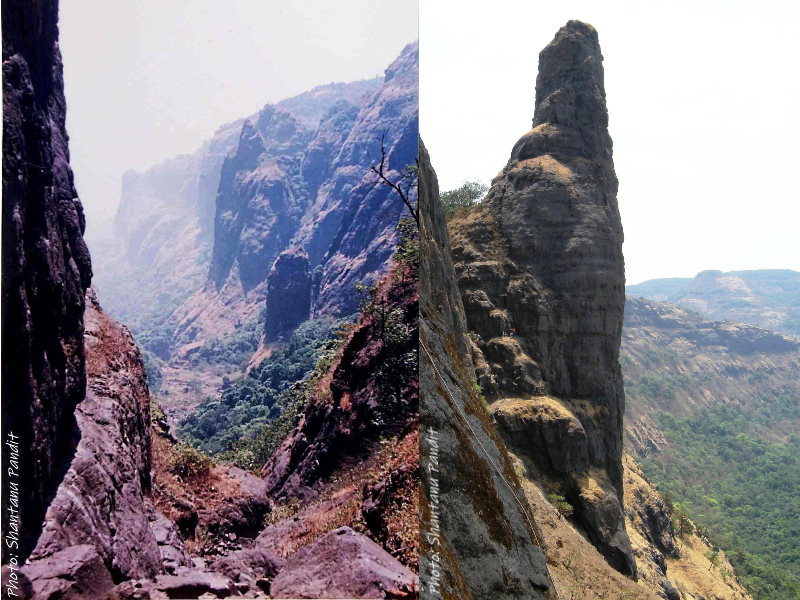
The photo on the left is that of the gorge from where the river Kundalika originates. There are a series of three pinnacles on the drainage’s true right side. The uppermost pinnacle – the smallest one – that is seen in the picture is what I had climbed way back in 1994 – my only first ascent. This gorge is a personal favourite, and a scramble down this drainage has become a sort of annual pilgrimage for me (described in detail in my post ‘Exploring Integrations & Associations‘).
The photo on the right is that of Kalakrai pinnacle that is next to the fort of Dhak.
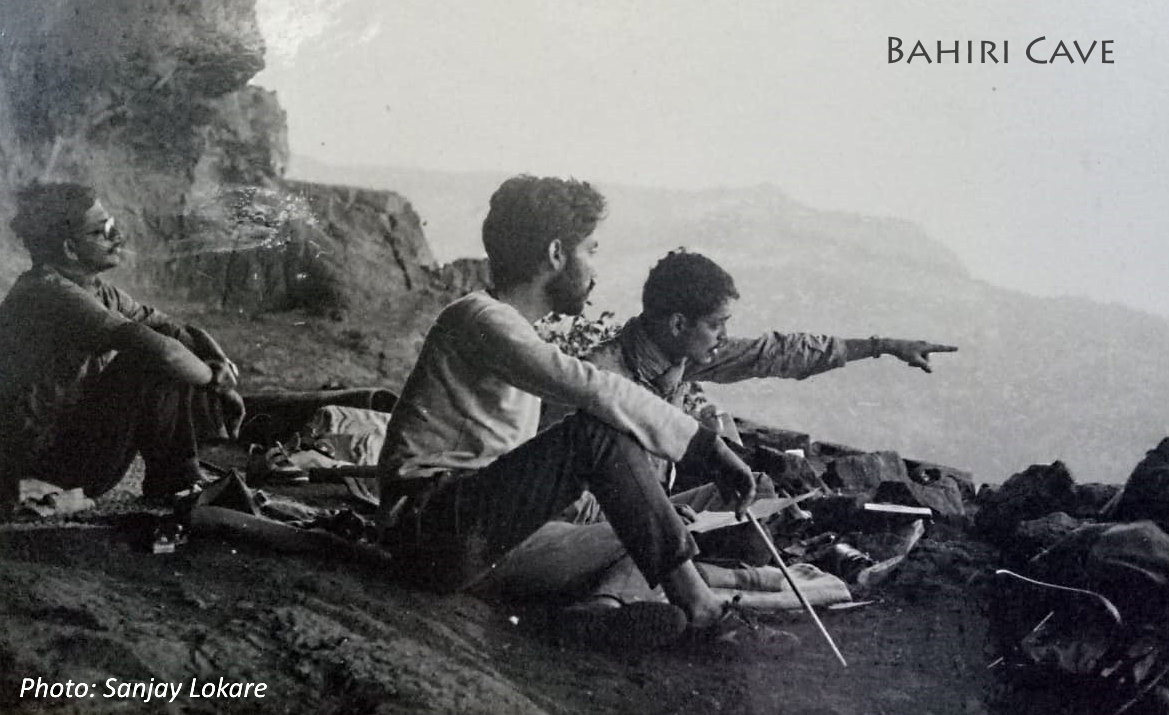
The west facing sheer wall of Dhak fort (which is actually the escarpment of the Deccan plateau at that location) has a cave which can be accessed via a trail carved on the sheer rock face and which is dangerously eroded today. I have been making personal trips to this remarkable place since mid-1980s. And I have conducted many of my outdoor management development programmes in the area surrounding this exceptional spot – some of these have been epic experiences (not in terms of adventure but in terms of learnings and application of those learnings back at workplace by participants).
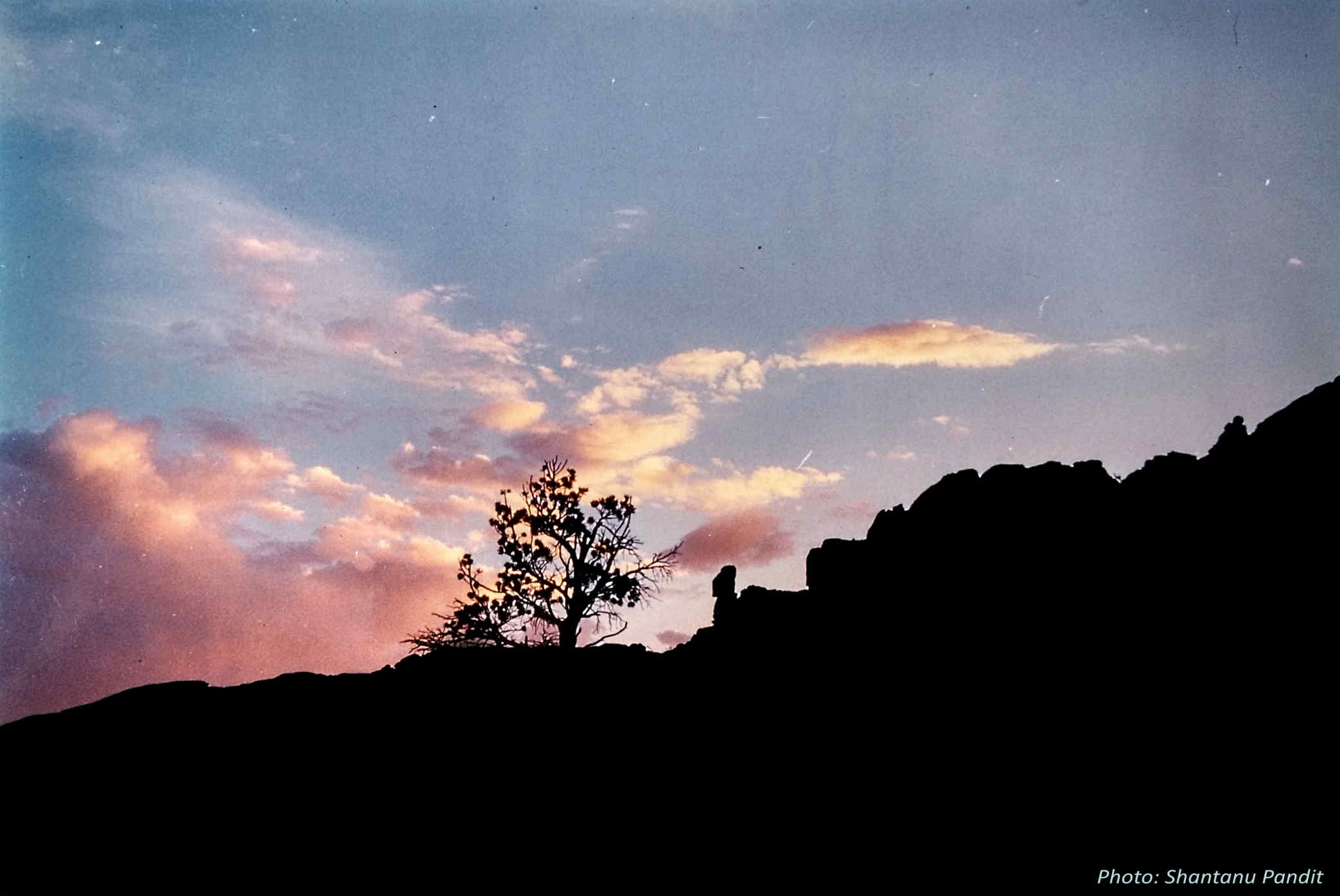
And finally, this is ‘Easter Rock’ in the Split Rock and Lankin Dome area of Wyoming, U.S.A. The rock climbing section of my instructor course with National Outdoor Leadership Course (NOLS) happened in that area in 2000. And Easter Rock rose in the distance on a ridge. I have been fascinated by the stirring accounts of phenomenal feats of the famous explorer Thor Heyerdahl. In an intriguing book titled ‘Aku Aku’ he has written about his research on Easter Island. So I felt a strange tug at my heart when I saw this Easter Rock. This was another of the many connections between my readings and what I encountered in my first ever trip to a foreign land and which I have described in The Cottontail Connection. It is this dimension of travel, any travel, that is so rewarding and compelling.
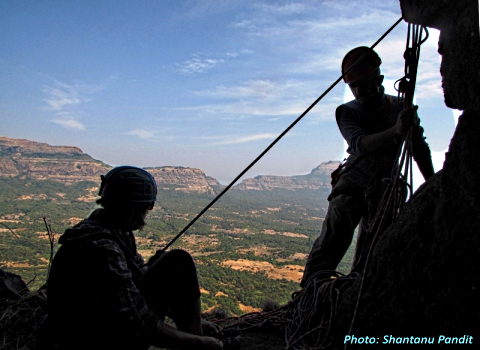
Pinnacles: pathways to a world of silence and meditative action. A world of climbers.
